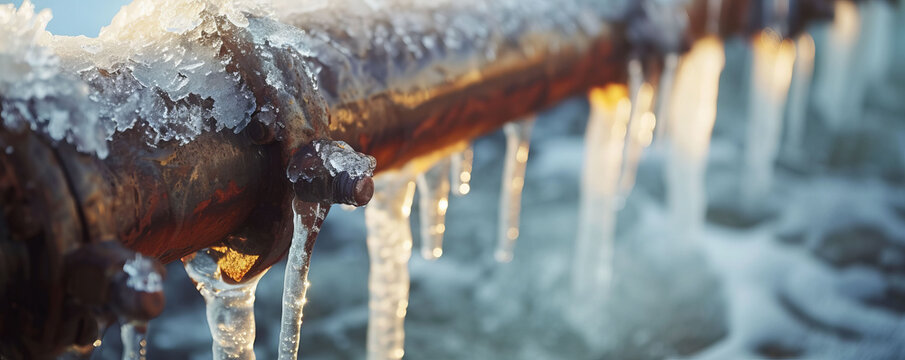Just about every person seems to have their private opinion with regards to 6 Ways to Prevent Frozen Pipes.

Winter can damage your plumbing, specifically by freezing pipes. Below's just how to stop it from occurring and what to do if it does.
Introduction
As temperatures decline, the risk of frozen pipes rises, possibly bring about pricey fixings and water damages. Understanding exactly how to stop icy pipelines is essential for homeowners in chilly climates.
Recognizing Frozen Pipes
What triggers pipes to ice up?
Pipelines freeze when exposed to temperatures below 32 ° F (0 ° C) for extended durations. As water inside the pipes ices up, it broadens, taxing the pipe walls and potentially triggering them to break.
Threats and problems
Frozen pipes can bring about water disturbances, residential or commercial property damages, and expensive fixings. Ruptured pipes can flooding homes and create substantial architectural damage.
Indications of Frozen Pipes
Determining frozen pipelines early can stop them from rupturing.
Just how to identify frozen pipelines
Seek decreased water flow from faucets, uncommon smells or noises from pipes, and noticeable frost on revealed pipelines.
Prevention Tips
Shielding susceptible pipes
Cover pipes in insulation sleeves or make use of warm tape to secure them from freezing temperature levels. Focus on pipelines in unheated or outside locations of the home.
Home heating techniques
Maintain interior spaces effectively warmed, particularly locations with plumbing. Open closet doors to enable warm air to flow around pipes under sinks.
Safeguarding Outdoor Plumbing
Garden hose pipes and exterior faucets
Separate and drain garden tubes before wintertime. Install frost-proof spigots or cover outside taps with shielded caps.
What to Do If Your Pipelines Freeze
Immediate actions to take
If you presume icy pipelines, maintain taps open to eliminate stress as the ice melts. Utilize a hairdryer or towels soaked in hot water to thaw pipelines gradually.
Long-Term Solutions
Architectural modifications
Think about rerouting pipes far from outside walls or unheated areas. Include additional insulation to attics, cellars, and crawl spaces.
Upgrading insulation
Invest in high-quality insulation for pipelines, attics, and wall surfaces. Proper insulation aids preserve regular temperature levels and minimizes the danger of frozen pipelines.
Conclusion
Stopping frozen pipes calls for positive procedures and fast feedbacks. By comprehending the causes, signs, and safety nets, home owners can secure their plumbing throughout cold weather.
6 Proven Ways to Prevent Frozen Pipes and Protect Your Home
Disconnect and Drain Garden Hoses
Before winter arrives, start by disconnecting your garden hoses and draining any remaining water. Close the shut-off valves that supply outdoor hose bibs and leave the outdoor faucet open to allow any residual water to drain. For extra protection, consider using faucet covers throughout the colder months. It’s also important to drain water from any sprinkler supply lines following the manufacturer’s directions.
Insulate Exposed Pipes
Insulating your pipes is an effective way to prevent freezing. Pipe insulation is readily available at home improvement stores and is relatively inexpensive. Pay close attention to pipes in unheated areas such as the attic, basement, crawl spaces, or garage. Apply foam insulation generously to create a buffer against the cold. You can also wrap your pipes in heat tape or thermostat-controlled heat cables for added warmth.
Seal Air Leaks
Inspect your home for any cracks or openings that could let in cold air. Seal any holes around the piping in interior or exterior walls, as well as the sill plates where your home rests on its foundation. Additionally, make sure to keep your garage door closed unless you’re entering or exiting. Leaving it open creates a significant air leak that can lead to frozen pipes.
Allow Warm Air Circulation
During cold snaps, it’s essential to allow warm air to circulate evenly throughout your home. Leave interior doors ajar to promote better airflow. Open kitchen and bathroom cabinets to help distribute heat consistently around the rooms. If you have small children or pets, be sure to remove any household chemicals or potentially harmful cleaners from open cabinets for safety.
Let Faucets Drip
A small trickle of water can make a big difference in preventing ice formation inside your pipes. When temperatures drop significantly, start a drip of water from all faucets served by exposed pipes. This continuous flow helps prevent the water from freezing. Additionally, running a few faucets slightly can relieve pressure inside the pipes, reducing the chances of a rupture if the water inside does freeze.
https://choateshvac.com/6-proven-ways-to-prevent-frozen-pipes-and-protect-your-home/
:strip_icc()/snow-outdoor-faucet-pipes-4af65d1e5e904fb1aa7bf74071fe5d89.jpg)
We were made aware of that write-up on How to prepare your home plumbing for winter weather from an acquaintance on our other domain. Are you aware of somebody else who is looking into 6 Ways to Prevent Frozen Pipes? Please feel free to promote it. Thank you so much for going through it.
Book Now!